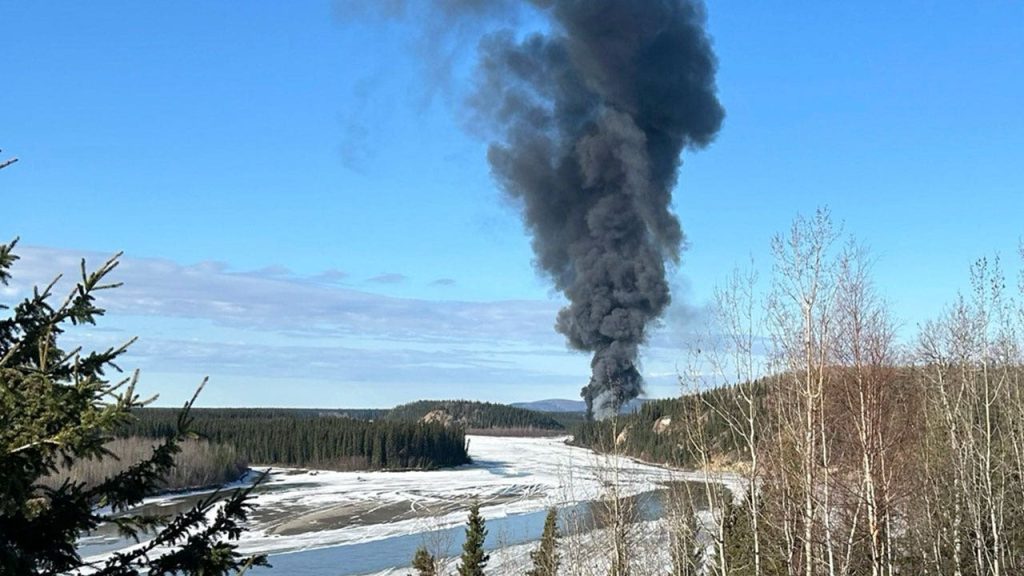A vintage military plane crashed just outside Fairbanks, Alaska while delivering heating oil to a remote Alaska Native village, resulting in the death of both pilots. The pilot had reported a fire on board shortly after takeoff before attempting to return to Fairbanks International Airport. The C54D-DC airplane crashed just 7 miles outside Fairbanks, hitting a steep hill and bursting into flames. They were carrying 3,200 gallons of heating oil to the small village of Kobuk, located about 300 miles northwest of Fairbanks. Recovery efforts were hindered by thin ice and open water on the Tanana River nearby.
Witnesses to the crash, including Mike Emers and Gary Contento, saw the plane on fire and heard explosions before it went down. Emers reported the incident to authorities and, along with his son and neighbor, visited the crash site to help. Debris from the crash scattered over a wide area, including a mix of airplane parts, clothing, and personal items. The fire was still burning when first responders arrived, prompting Emers to try to contain it with his sweatshirt. The crash of the 80-year-old plane caused devastation to the surrounding area, with trees torched and flames spreading.
The difficult and expensive nature of getting fuel to rural Alaska villages was highlighted by the crash. The price of heating fuel in Kobuk was particularly high, and barges and air tankers are often used to deliver much-needed fuel to remote communities. Sea or river ice, water levels, and availability of ice roads can limit transportation methods for fuel. The C54D-DC Skymaster plane that crashed was carrying both heating oil and aviation fuel, underscoring the importance of efficient fuel delivery methods in these remote locations.
The crashed C54D-DC plane was a military version of the Douglas DC-4, a World War II-era aircraft that played a significant role in the Berlin Airlift of 1948. The plane involved in the crash had a long history of service, including with the U.S. Army Air Force, the U.S. Navy, and the Royal Air Force. After changing ownership multiple times, the plane was owned by Alaska Air Fuel at the time of the crash. The NTSB has sent investigators to the crash scene to determine the cause of the incident.
The crash of the vintage military plane raises safety concerns and underscores the challenges of transportation and fuel delivery in rural Alaska. The loss of the two pilots highlights the risks associated with flying in remote and harsh environments. The community of Fairbanks is left mourning the loss of the pilots and dealing with the aftermath of the fiery crash. The investigation into the crash will provide crucial information on what led to the tragic event and may lead to recommendations for improved safety measures in the future. The resilience and community spirit of those who rushed to help in the aftermath of the crash demonstrate the solidarity in facing such tragedies.



